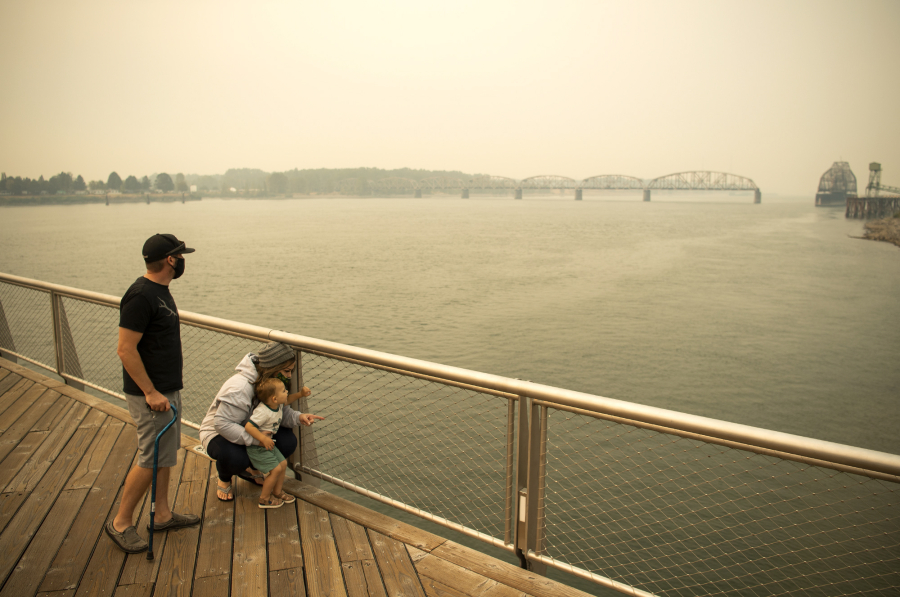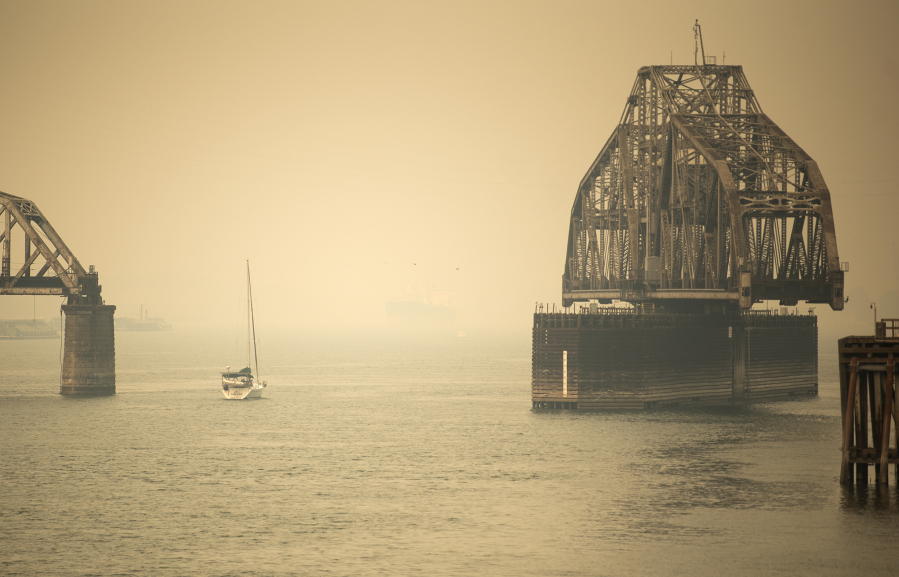Smoky weather can be difficult to predict, but there are ways to prepare for it and to keep yourself safe when it arrives.
The Washington Department of Ecology maintains multiple online tools to monitor air-quality conditions at enviwa.ecology.wa.gov, including a five-day regional smoke forecast map. Residents should keep an eye on the forecast when traveling or planning camping trips.
“People are used to a weather forecast, but smoke is trickier than forecasting the weather,” said Andrew Wineke, communications manager at the department’s Air Quality Program. “Smoke doesn’t always behave the same way that water vapor does in a cloud; it has some different effects.”
The primary health concern from smoke is airborne PM2.5, meaning particulate matter less than 2.5 microns in diameter. That’s only about a quarter of the width of dust, pollen and mold particles, according to the Oregon Department of Environmental Quality.
When inhaled, PM2.5 can lodge deep in a person’s lung tissue and remain there for long periods of time, causing both short- and long-term negative health impacts. The best way to avoid inhaling it is to stay indoors and keep doors and windows closed, Wineke said.
Smoke inhalation is hazardous to everyone, but it poses the greatest risk to people who are young, are elderly or have preexisting conditions such as asthma, chronic obstructive pulmonary disease, emphysema or heart disease, according to Clark County Health Officer Dr. Alan Melnick.
“Those folks especially need to be prepared, and they need to be prepared to be indoors,” he said.
People should prepare for smoke events by making sure they have enough supplies on hand to stay indoors for several days, he said, including a sufficient supply of any medications they’re taking.
If you have an air conditioner or heat pump, make sure it has a clean filter and is set to recirculate indoor air, Wineke said. Filters can be hard to find in stores once the smoke arrives, added Clark County public health spokeswoman Marissa Armstrong, so it’s a good idea to stock up in advance.
During smoke events, avoid using candles or anything else that burns indoors, Melnick added. Wood-burning stoves are also a bad idea, and even gas stoves aren’t great — you should try to use electric burners or a microwave to cook.
“You want to reduce air pollution in-home, so don’t be burning incense,” he said. “Don’t use your fireplace, obviously. You want to keep your indoor air as clean as possible.”
The same rules apply when driving: Keep the car windows closed and set the air conditioning to recirculate. If you have to go outside, wear an N95 or KN95 respirator that has been approved by the National Institute for Occupational Safety and Health.
Cloth face masks and surgical masks have been widely used in the past year to slow the spread of the novel coronavirus because they can block droplets that carry the virus, Melnick said, but they won’t filter out smoke particles — only N95 or KN95 respirators that meet National Institute for Occupational Safety and Health standards can do that.
You can also buy an air purifier for indoor spaces — just make sure it has a high-efficiency particulate air (HEPA) filter. In a pinch, the Department of Ecology webpage at ecology.wa.gov/Air-Climate/Air-quality/Smoke-fire has instructions for how to build a makeshift purifier by strapping a furnace filter to a box fan.
It might look a little cobbled together, but Wineke said the department built and tested several of the contraptions two years ago and found that they produced significant reductions in harmful particles within enclosed indoor spaces.
“Absolutely, it can help,” he said.
The filter-equipped box fan shouldn’t be put in a window, he added. Smoky air tends to occur alongside hot temperatures, which might make people want to keep their windows open, but a box fan filter won’t be good enough to purify outside air being pulled in through a window. It needs to be inside, with the windows shut, so that it can recirculate indoor air. It also shouldn’t be left running unattended.
If you go the box fan route, be sure the filter is of a sufficiently high grade to do the job. Low-grade filters designed to catch allergens or pet dander aren’t good enough — the tiny smoke particles will slip through.
The filter needs to have a MERV rating of at least 13 to be able to stop smoke particles. Most filters use the MERV standard, although the common 3M Filtrete brand uses an alternative standard called MPR. The equivalent minimum grade for a 3M filter is 1900.
There’s one final thing you can do to prepare, Melnick added: Get your COVID-19 vaccine, if you haven’t already. Smoke inhalation and COVID-19 both cause trouble in the lungs, and dealing with both at once can carry increased risk.
“Wildfires and exposure to smoke can put you over the edge for COVID-19 and increase risk of complications; there’s no doubt about that,” he said.





